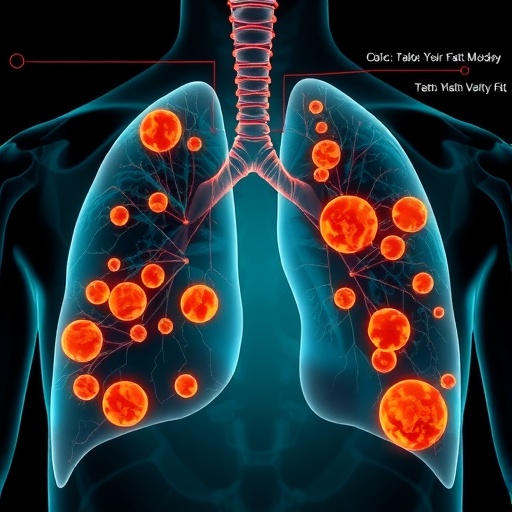
A groundbreaking advancement in neonatal healthcare technology has emerged from a collaborative research effort aiming to revolutionize the screening process of hemoglobin disorders in newborns. The newly developed method promises to transform early diagnostic approaches for thalassemia and other abnormal hemoglobinopathies by utilizing a low-cost, high-throughput liquid chromatography–mass spectrometry (LC–MS) technique. This innovation not only heralds significant improvements in healthcare accessibility but also introduces a sophisticated analytical platform capable of delivering precise and rapid results crucial for timely clinical intervention.
Thalassemia, a hereditary blood disorder characterized by abnormal hemoglobin production, remains a significant global health burden, especially in regions with high prevalence rates such as the Mediterranean, Southeast Asia, and parts of Africa. Traditional newborn screening methods, typically reliant on electrophoresis or high-performance liquid chromatography (HPLC), often face limitations in sensitivity, specificity, cost, and throughput capacity. Addressing these challenges, researchers have now fine-tuned an LC–MS-based protocol that delivers scalable and cost-efficient newborn screening, bridging the gap between technological capabilities and real-world diagnostic needs.
The methodology hinges on leveraging LC–MS, an analytical chemistry technique that combines the physical separation capabilities of liquid chromatography with the mass analysis capabilities of mass spectrometry. This coupling allows for the detailed profiling of hemoglobin variants with unprecedented accuracy. By optimizing the sample preparation, chromatographic separation, and mass spectrometry detection parameters, the team has succeeded in markedly enhancing the method’s throughput and sensitivity, which are critical for screening the massive influx of newborn samples in clinical settings.
A central pillar of this advancement is the protocol’s ability to distinguish among a spectrum of hemoglobin variants and thalassemia-related mutations with high precision, even in complex biological matrices like dried blood spots commonly used in neonatal screening. The careful calibration of the LC gradient, coupled with refined ionization settings and targeted mass fragmentation patterns, allows the platform to reliably detect subtle molecular differences indicative of disease states, surpassing the resolution of earlier screening methods.
Cost efficiency forms a vital aspect of this innovation. Conventional neonatal screening programs can be prohibitively expensive, especially in resource-limited settings where thalassemia prevalence is often highest. By streamlining the analytical workflow, reducing reagent consumption, and enabling multiplexed sample processing, the new LC–MS-based approach dramatically reduces per-sample costs. This economic feasibility opens remarkable new avenues for expanding national newborn screening programs and addressing health disparities in underserved populations.
High-throughput capacity is another hallmark of the method. The researchers report significant improvements in sample processing rates, enabling hundreds of newborn samples to be analyzed per day with minimal manual intervention. Automation compatible protocols streamline the analysis pipeline, ensuring reproducibility while freeing technical staff from labor-intensive procedures. This scalability makes the method a viable solution for integration into large-scale health systems, where timely results are essential for effective disease management.
Technically, the study highlights innovative modifications to standard LC–MS workflows that enhance the detection of hemoglobin variants. The use of specific chromatographic columns designed for optimal separation of globin chains, combined with finely tuned mass spectrometer parameters such as selected reaction monitoring (SRM), fortifies the assay’s analytical performance. These enhancements reduce background noise and improve signal-to-noise ratios, facilitating the identification of rare variant species even at low abundance in neonatal samples.
In addition to analytical refinements, the research team addressed practical challenges related to newborn sample collection and preservation. Employing dried blood spots as the matrix of choice significantly simplifies logistics and storage requirements without compromising analytical quality. This approach aligns with public health infrastructure in many parts of the world and enables retrospective analysis if needed, further underscoring the method’s versatility.
Beyond technical considerations, the development embodies a paradigm shift in precision medicine applied to hematologic disorders. Early detection via robust screening allows prompt clinical decision-making, including initiation of therapies, genetic counseling, and family screening, effectively curbing disease progression and improving quality of life for affected individuals. Deploying such an advanced screening tool in newborn populations could thus dramatically reduce the long-term healthcare burden associated with untreated thalassemia and related conditions.
Environmental and operational sustainability is another subtle but important advantage of the new method. Reduction in reagent waste and the minimized need for consumables align with greener laboratory practices, resonating with global efforts to limit scientific operations’ ecological footprints. Such attributes are likely to attract attention from policymakers and healthcare providers committed to sustainable development goals.
Looking forward, the LC–MS platform’s adaptability offers fertile ground for expansion to other hemoglobinopathies and genetic blood disorders. The modular design of the assay permits inclusion of additional analytes and molecular markers, potentially enabling comprehensive neonatal genetic screening panels in a single run. This extensibility could pivot neonatal diagnostics into a new era of multiplexed, non-invasive, and holistic health assessments from the earliest stages of life.
Integration with digital health technologies further enhances the future prospects of this method. Combining LC–MS data with AI-driven analytics and electronic health record systems could enable real-time decision support, pattern recognition, and population health monitoring. Such convergence would optimize personalized patient care pathways and public health strategies alike, heralding smart neonatal screening ecosystems.
Crucially, rigorous validation studies underpin the credibility of this innovation. Extensive clinical trials comparing the new LC–MS approach against gold-standard methods demonstrate concordant or superior diagnostic accuracy, with exceptional reproducibility across diverse clinical cohorts. These findings affirm the method’s readiness for deployment in routine clinical labs and encourage regulatory acceptance.
The research community has applauded the project for its cross-disciplinary collaboration among clinical chemists, hematologists, bioengineers, and data scientists. This multidisciplinary synergy was instrumental in overcoming technical hurdles and refining the assay for clinical robustness. Such integrative team science exemplifies the future of medical technology innovation.
Given the rising global incidence of hemoglobinopathies and the critical importance of newborn screening, the implications of this method are profound. Widespread adoption could reduce neonatal mortality rates, minimize disease complications through early intervention, and ultimately reshape health outcomes on a population scale. The democratization of advanced diagnostic tools stands to bring equity to vulnerable communities worldwide.
In conclusion, the development of this low-cost, high-throughput LC–MS method marks a landmark achievement in newborn screening for thalassemia and abnormal hemoglobin disorders. Its combination of technical sophistication, affordability, and scalability paves the way for a new standard in neonatal diagnostics. As healthcare systems embrace such innovations, millions of newborns will benefit from timely, reliable detection and the promise of better health trajectories from the very start of life.
Subject of Research: Newborn screening of thalassemia and abnormal hemoglobin disorders using LC–MS technology.
Article Title: Development of a low-cost and high-throughput LC–MS method for newborn screening of thalassemia and abnormal hemoglobin disorders.
Article References:
Huang, WX., Cai, YX., Yang, J. et al. Development of a low-cost and high-throughput LC–MS method for newborn screening of thalassemia and abnormal hemoglobin disorders. World J Pediatr (2025). https://doi.org/10.1007/s12519-025-00962-y
Image Credits: AI Generated
DOI: https://doi.org/10.1007/s12519-025-00962-y
Tags: affordable diagnostic methods for thalassemiaanalytical techniques for hemoglobinopathiescost-effective healthcare technologyearly diagnosis of blood disordersglobal health impact of thalassemiahemoglobin disorder screening innovationshigh-sensitivity screening for hemoglobin disordershigh-throughput LC-MS newborn screeningliquid chromatography-mass spectrometry applicationsneonatal healthcare advancementsprecision medicine in neonatologythalassemia prevalence in newborns




